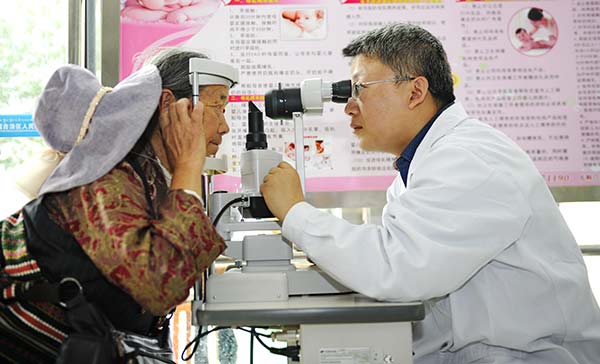
A volunteer doctor from Shandong province conducts an eye examination for a woman in Lhasa, the Tibet autonomous region. Zhang Rufeng / Xinhua
Traditionally, women have chosen to give birth at home in the Tibet autonomous region, which caused dramatic death rates for mothers and newborn babies. But improved maternal care has reversed the trend, Tibet's Women's Federation said.
Over 50 years, thanks to investments from the central government, the All-China Women's Federation and many organizations, the maternal and infant mortality rates have decreased sharply in the region.
Statistics from the regional women's federation released on Wednesday show that the maternal mortality rate has dropped to 108 per 100,000 from about 5,000 per 100,000 five decades ago. In the same period, the infant mortality rate has decreased to 16.8 per 1,000 from 430 per 1,000.
Behind the trend are improved obstetrics and a growing acceptance of hospital births. Tibet's health authority said 82 percent of women chose hospital births in the first half of 2014.
Government investment has funded the construction of medical centers in remote areas, bringing healthcare closer to rural residents.
"Tibetan women are now reimbursed all of their hospital fees, and most women now choose hospital delivery," said Drolma Yangkyi, a medical worker at Lhasa's Maternal and Children's Hospital.
Healthcare and hygiene has improved, and women now account for 70 percent of staff at all levels of medical agencies across Tibet, Tibet's Women's Federation said.
Education has also improved. The current primary school enrollment rate is 99.6 percent overall, with the female enrollment rate at 99.6 percent. The junior middle school enrollment rate is 98.9 percent, with 99.8 percent for females, the women's federation data show.
With the support of the Tibet Women's Federation, the Tibet Water Resource Department, and others, more than 20 million yuan ($3.15 million) has been invested in more than 100 townships.
The money was used to build wells, as well as paying for courses and schools for poorer female students, and vocational training courses.


















































